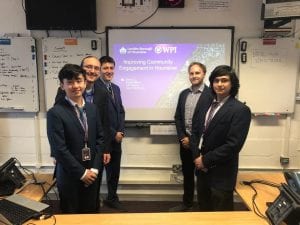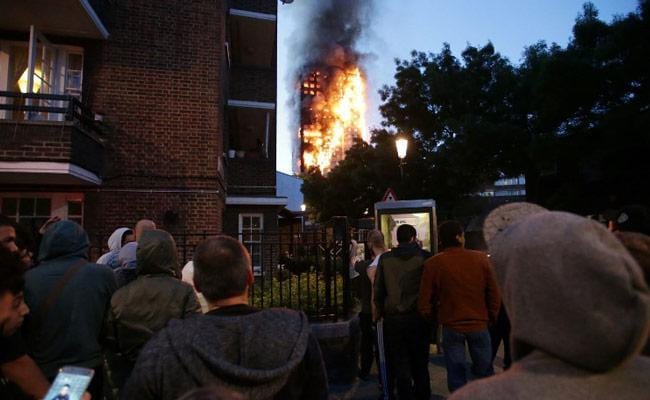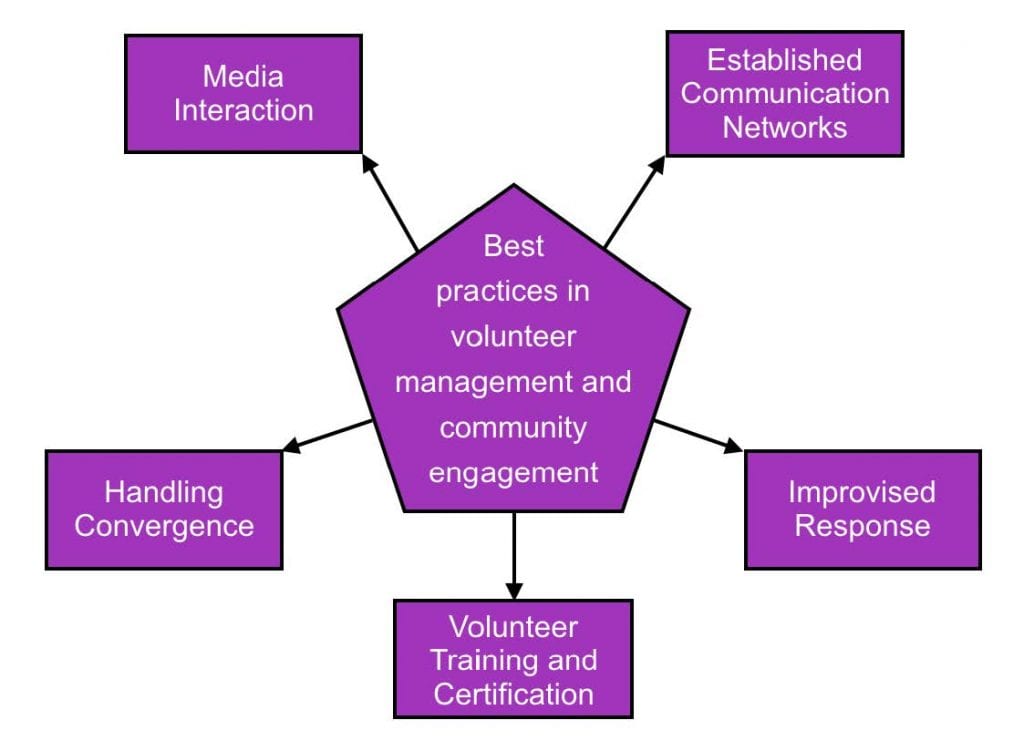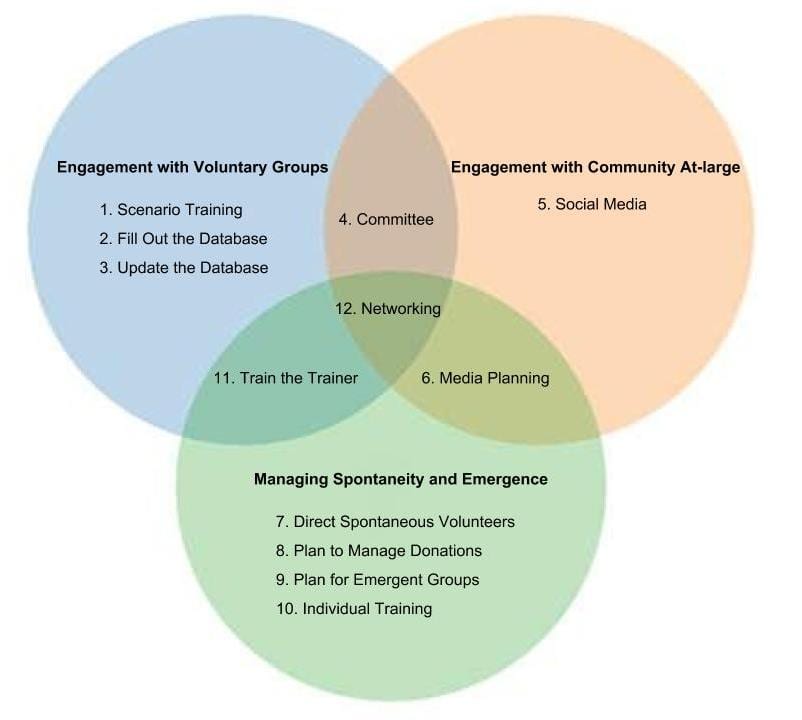Building Community Resilience in Hounslow Using Community Engagement
Executive Summary
This research was conducted at the request of the London Borough of Hounslow’s Contingency Planning Unit (CPU) with the goal of improving the management of voluntary contributions, including materials and time, and improving community engagement before, during, and after an emergency. After providing a literature review, this report details results from interviews with established experts in the field of disaster research, local authorities within the borough, and local stakeholders in Hounslow. Along with the results of these interviews, this report summarizes what was found to be the best current practices of volunteer management and community engagement and concludes with a set of recommendations for the Contingency Planning Unit.
The Phenomenon of Convergence in Disasters
When people are in need, particularly after a large disaster, an occurrence known as convergence takes place. This phenomenon stems from the human desire to help those in need and is defined by Fritz (1957) as the “informal, spontaneous movement of people, messages, and supplies towards the disaster area.” While an impressive manifestation of human empathy, convergence can also create disorganization and chaos when authorities are not prepared for a massive outpouring of support. This support was seen in the image below (Figure 1) in which thousands of people showed up on the site of the Grenfell Tower Fire, resulting in a chaotic environment.
Figure 1: Personnel Convergence at the Grenfell Tower Fire (France-Presse, 2017)
Convergence is divided into informational, material, and personnel convergence (see Table 1). In order to manage convergence as a whole, an emergency planner must manage each type of convergence. In particular, personnel convergence with untrained volunteers can cause chaos and an emergency planner should be able to manage the different types of volunteers that could appear during an emergency, including established volunteer groups and individual spontaneous volunteers. In order to manage established volunteer groups, Buckle, Marsh, and Smale (2003) suggest emergency planners invite established groups to “Recovery Committee” meetings. In order to manage individual volunteers, Whittaker, McLennan, and Handmer (2015) suggest that government agencies should establish a problem-solving structure for handling volunteers rather than trying to handle them via a top-down system.
Table 1: Types of Convergence
| Informational Convergence | The influx of communications, both public and private, related to a disaster |
| Material Convergence | The accumulation of material goods donated to disaster response |
| Personnel Convergence | The spontaneous movement of volunteers to a disaster site |
Motivation and Methodology
Because of the difficulties involved with managing volunteers in an emergency, the Contingency Planning Unit asked us to develop a set of recommendations that will help them prepare to address these issues in Hounslow. In addition to these recommendations, this project also produced a database of groups in the community that would provide volunteers and donations in an emergency in order to improve coordination between the CPU and established groups.
The goal of this project was to improve community engagement and management of voluntary contributions before, during, and after an emergency in Hounslow. In order to achieve this goal, we accomplished three intermediate objectives:
- Identify best practices in volunteer management and community engagement;
- Evaluate how local authorities in Hounslow and other government agencies in and around London currently engage with the community, businesses, volunteers, and faith groups in the event of emergencies;
- Assess the needs and capabilities of local stakeholders in handling volunteers, materials, and other donations during emergencies.
For each of our objectives, we identified and interviewed key individuals, then determined common themes in their responses. In order to assess best practices for community engagement, we interviewed academic experts around the globe. In order to evaluate local authorities, we interviewed key local officers. Finally, in order to assess the needs and capabilities of local stakeholders, we interviewed leaders in the community.
Best Practices
In our interviews with experts in the field of emergency management, we identified five common themes within best practices for community engagement (see Figure 2). According to Professor David McEntire, in order to maximize collaboration, authorities should communicate and network with the voluntary sector before an emergency. Established communication can also be used to improve coordination during an improvised response, such as the evacuation of Manhattan during 9/11. Training and certifying volunteers can also improve coordination between volunteers and local authorities. According to Professor Thomas Drabek, the scope and type of convergence can only be determined after an emergency, but emergency managers should plan for it to occur. Finally, the media plays an important and perhaps crucial role in convergence. Thus, planning how emergency management will interact with the media can help manage convergence and improve community engagement.
Figure 2: Best practices in volunteer management and community engagement from expert interviews
Current Practices
Current practices for community engagement and management of voluntary contributions include direct two-way communication through informal contacts, communication via committees and social media, and empowering the community through training. The Metropolitan Police use informal contacts to engage with the community as well as a widely followed Twitter account and both the police and the Community Partnerships Unit rely on various forums in Hounslow to engage with the community. Both the police and Community Partnerships Unit empower the community by providing training in important skills to community members. In the case of emergency response and recovery volunteers, training them would improve both their abilities and coordination. The current practices of both the police and the Community Partnerships Unit agreed with what the literature review and academic interviews revealed to be the best practices for community engagement.
Needs and Capabilities of Local Stakeholders
The needs and capabilities of local stakeholders were largely consistent between the different groups. Most of the groups we interviewed were adamant about helping in emergencies, and many needed similar things from the CPU to be able do so. These groups expressed a need for organization and guidance from the CPU, the development of a relationship, and finally scenario training. As for the capabilities of the stakeholders, every group offered different resources, but there were three main resources offered: volunteers, space, and donations. Some groups offered other capabilities; for example, the Gurdwara Sri Guru Singh Sabha offered to set up a collection for monetary donations and offered to coordinate volunteers.
Taking into account the best practices, current practices, and needs and capabilities of local stakeholders, the project team compiled a set of recommendations for the Hounslow Contingency Planning Unit to improve community engagement and management of voluntary contributions (see Figure 3).
Figure 3: Recommendations






